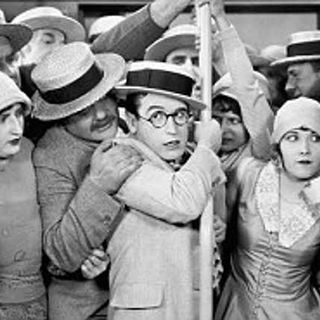
Low Self‑Esteem Can Seep Into Physical Behaviors, Cause Health Issues
Self-loathing behaviors may cause us to stop taking care of ourselves, opening us up to physical health problems.

Having a good opinion of oneself is no easy feat, especially while living in communities rife with competition, cruelty and imposter syndrome. While low self-esteem, or having a poor opinion of oneself, has multiple mental health consequences, like anxiety and depression, low self-esteem can also make people want to avoid social situations and stop trying new things, according to the NHS.
Low-self esteem is also known to affect women more than men, and younger people more than older people. “During the past two decades, a large number of studies on age and gender differences in self-esteem have found that men have higher self-esteem than women and that both men and women show age-graded increases in self-esteem,” Wiebke Bleidorn, associate professor of psychology at University of California, Davis, said in a statement, regarding a study she authored around age and gendered differences in self-esteem. Low self-esteem and body confidence are also rampant with young Indian women, with 60% of Indian girls dealing with low-to-medium self-esteem and causing 65% of girls to avoid engaging with friends and family or outdoor activities, according to a report by the Indian Express.
However, what we often don’t think about is how low self-esteem can manifest physically — in our health and in the way we interact with the world. Poor mental health is often seen as invisible, but it can have multiple physical manifestations, even leading us to physically harm ourselves — and this is no different for self-esteem, which is the basis of how we view ourselves, and thus, how we treat ourselves.
Related on The Swaddle:
Gaslighting: How to Recognize and Cope With This Manipulation Tactic
Low self-esteem can influence the way we unconsciously present ourselves, that is, our body language.”Certain people [with low self-esteem] might have manifestations in their body language of slouching and softer voices. However, there might be some who might have an aggressive guard to protect themselves or prove to themselves or people around them, that they are valued or worthy,” said Naina Shahri, a therapist with the Alternative Story. Slouching can cause an array of health problems ranging from fatigue to weakened muscles.
Fatigue is also a side effect of poor self-esteem. People with low self-esteem may utilize a significant portion of their energy to internalize feelings of anger, sadness, and guilt at themselves, according to Shahri. “Being aware, understanding and dealing with intense and heavy emotions consumes the emotional energy of the person. Energy is a limited resource that each person has and when one spends emotional energy to process and understand overwhelming emotions, they might not have as much energy to do other tasks,” she said.
Related on The Swaddle:
Self‑Esteem in Children: Where It Comes From, How to Build It
People with low self-esteem are also at risk for body dysmorphic disorder, which causes one to keep thinking about the flaws and perceived defects in their appearance, which can elevate into suicidal or self-harming tendencies. There’s also a significant link between low self-esteem and eating disorders, which are psychiatric disorders that cause the body to waste away due to dietary restriction and overexertion.
Low self-esteem may also be linked to developing unhealthy habits like smoking or drinking, possibly developing substance abuse, though the link is not direct. “There are various factors that contribute to substance abuse. A person’s support system, social relationships, emotional health, situational factors, genetic predispositions, and resources to cope with all of these factors contribute to a person being drawn to substance use. It is difficult to narrow down one factor that leads to substance use, as in most situations it is a combination,” Shahri said.
The ideal way to overcome low self-worth and -esteem would be to seek counseling or cognitive behavioral therapy. “Self-esteem is very often determined by others’ valuation of the self which primarily defines one’s own understanding of themselves. [It] can have psychosocial determinants and therapy would be a space to understand the source of the beliefs of self-worth and value,” Shahri said.
Aditi Murti is a culture writer at The Swaddle. Previously, she worked as a freelance journalist focused on gender and cities. Find her on social media @aditimurti.
Related


Here’s How You Cope With a Fear of Crowded Spaces
